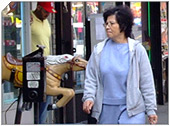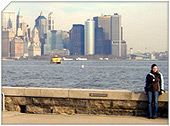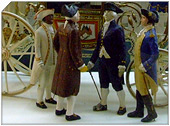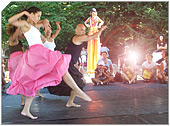New Springville, Staten Island, New York City
|
Getting Started
Index
NYC Neighborhoods
Manhattan
Brooklyn
Queens
Bronx
Staten Island
NYC Icons
Chrysler Building
Flatiron Building
Empire State Building
Safe NYC
NYPD
FDNY
NYC Weather
NYC Climate
NYC Weather Forecast
Winter Season
Spring Season
Summer Season
Fall Season
NYC History & Politics
New York City History
Tammany Hall and Politics
New York City Politicians
New York City Personalities
Culture of Gotham City
Culture of the city
Cultural diversity
City in popular culture
|
New Springville is a neighborhood in Staten Island, New York. The island makes up one of the five boroughs of New York City; the city is the largest in the United States.
Located near the island's geographical center, the neighborhood was founded in 1680 as Karle's Neck Village. By the early 19th Century the community included a dock (on Richmond Creek) and several freshwater springs, leading to its being renamed first Springville, then later New Springville.
New Springville remained largely rural until 1964, when the E. J. Korvette department store chain opened an outlet on the site of a former chicken farm. This was followed, in 1973, by the opening of the Staten Island Mall on the grounds of what had been a little-used airport, which changed the character of the neighborhood completely; soon adjacent land was converted to business (mostly retail) use a balls s well, and New Springville has emerged as a commercial and administrative core rivaling St. George. New Springville has also become a major public transportation hub, second in size on Staten Island only to that of the St. George ferry terminal; six city bus routes serve the area, including one going to Brooklyn, with the terminal consisting of a large bus depot which opened in the early 1980s.
Despite this, New Springville is among the more poorly served areas in all of Staten Island for public transportation, with de facto commuting curfews despite being part of a city renowned for 24 hour mass transit.
The Staten Island Ferry is 7 miles away. Public transportation to the Ferry is inadequate, with the closest Staten Island Rapid Transit train almost 4 miles away and buses that run infrequently after rush hour, often taking as long as 45 minutes to reach St. George and not always in synch with the boat schedule.
Express bus service is expensive ($5.00 each way to reach Manhattan) and as recently as 2001 the x17 and x31 buses ended return trips to Staten Island before 9 p.m. because the MTA felt that New Springville residents did not work late, attend sporting events or Broadway shows, or enjoy the city's nightlife. The MTA expanded the x17 service back to Staten Island to around midnight, ironically on September 10, 2001. X31 buses returning to the Island still cease operation before 9 p.m..
Weekday x31 service into Manhattan ends after rush hour and the line doesn't run on weekends. Off peak weekday x17 service into Manhattan runs as infrequently as once an hour and terminates at 3 p.m.. There is very limited x17 service on Saturdays and none on Sundays.
New Springville residents can take a local bus to Victory Blvd in the Bulls Head neighborhood when express buses servicing their neighborhood are not operating and catch an x10 bus into Manhattan. However, off peak local buses can run as infrequently as every 20 minutes and are not synchronized with the x10. In addition to a potential close to 20 minute wait for a local bus, New Springville residents wishing to catch the x10 can wait up to 30 minutes for service into Manhattan because of zero synchronization between local and express service.
In addition to its explosive development as a business district, New Springville also experienced massive residential growth during the latter third of the 20th Century, with thousands of single-family homes being built there, along with apartment and condominium complexes near the Staten Island Mall.
|
New York City Search
Quick NYC
|
|
|
 How safe is New York City?
How safe is New York City? Contrary to popular belief, the City consistantly ranks in the top ten safest large cities in the United States. The NYPD is the largest municipal police force in the world and has it's own Movie/TV Unit. |

New York has a humid continental climate resulting from prevailing wind patterns that bring cool air from the interior of the North American continent. New York winters are typically cold with moderate snowfall.  New York Weather Forecast New York Weather Forecast |

New York's two key demographic features are its density and diversity. The New York City metropolitan area is home to the largest Jewish community outside Israel. It is also home to nearly a quarter of the nation's South Asians, and the largest African American community of any city in the country.  Ethnic composition Ethnic composition |

New York Newspapers
 
|



 New York Weather Forecast
New York Weather Forecast
 Ethnic composition
Ethnic composition

















